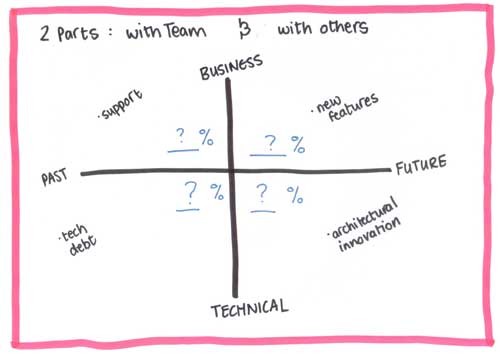Articles, Blog Posts, Books and Quotes on Agile Project Management
The first value of the Agile Manifesto is to prefer “Individuals and interactions over processes and tools”. But how can you know if your individuals and your teams like your current Agile approach. In his article, Henrik Kniberg present a simple tool to assess the health of your Scrum teams.
The product backlog might be the more important item for a Scrum team as it represents the business value that the project should deliver to its customers. Putting a priority on the features and user stories is however not always easy for the product owners, especially if they are dealing with multiple stakeholders. In this article, Samantha Laing shares a technique that can help to improve the results of this activity.
In large Agile projects where a Scrum team cannot deliver the full system, you have different options to organize your team. You can use feature teams that work on a set of user stories or component teams that work on a subsystem or component. In his blog post, Michael Valenta reports his experience as a ScrumMaster from the usage of features teams.
When you start scaling Agile, you might need more metrics to assess you software development process. In this article, Janani Rasanjali Liyanage proposes some metrics that adhere to Lean and Agile principles to measure business agility in terms of predictability, reliability and adaptability.
Managing the product backlog and prioritizing the user stories if one of the main responsibilities of the product owners in Scrum. In this blog post, Andy Carmichael explains how to assess the priority of product backlog items using the cost of delay.
This article examines the Agile myth that constant process improvement is imperative. It discusses the fact that if you need to continuously observe your process, you should wait for the pauses between iteration to perform process improvement.
In this blog post, Ralf Westphal explains how functional design and test-driven development (TDD) are the techniques that allows to bridge the gap between requirement and code in Agile.




